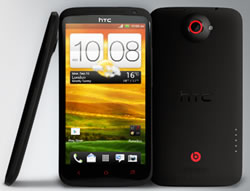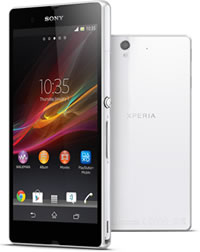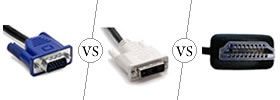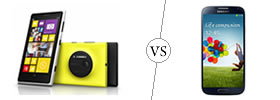Difference between HTC One X+ and Sony Xperia Z
Key Difference: The HTC One X+ sports a 4.7-inch super LCD 2 touch screen with approximately 312 ppi pixel density, meaning the screen is pretty awesome and it does not show any pixels. The device is powered by 1.7 GHz Quad-core NVIDIA Tegra 3 process making it faster than the original HTC One X. The Sony Xperia Z is the latest smartphone designed, manufactured and marketed by Sony Mobile and was released February 2013. The Xperia Z is a bar phone that is available with 5 inch TFT touch screen that has approximately 441 ppi pixel density that produces a sharp and clear display. The phone sports 1.5 GHz Quad-core Krait, 2GB RAM with up to 16 GB internal memory storage capacity and up to 32 GB expandable storage available.

HTC is a popular smartphone company and has been touted for many beautifully designed phones. The phones are smart, sleek and to the point with no extra marketing gimmick. HTC maintains this with the launch of the HTC One X+. The HTC One X+ is a new phone that shares many similarities to its big brother the HTC One X; however, it also shines in many places where the predecessor shied. The HTC One X+ is basically an upgraded version of the HTC One X and hit the market in November 2012.
The HTC One X+ sports a 4.7-inch super LCD 2 touch screen with approximately 312 ppi pixel density, meaning the screen is pretty awesome and it does not show any pixels. The screen has excellent resolution and shows sharp and crisp clear photos and videos. The screen is protected by Corning Gorilla Glass 2 that keeps it from getting minor day-to-day scratches. The device is sleek and thin in general, but has put on a little extra weight (5 grams) compared to the original One X. The phone is covered in a soft-touch polycarbonate plastic chassis that has smooth curved corners. The soft matte plastic makes it easy to grip the phone and keeps it from slipping through the fingers. The phone comes incorporated with the HTC Sense UI v4+, which is basically a combination of the HTC Sense and Jelly Bean. The combination of the two provides additional features such as: Google Now, Voice search, faster screen navigation, new gallery app (organizes photos by events and location) and HTC Get Started (allows PC to configure the phone faster).
The device is powered by 1.7 GHz Quad-core NVIDIA Tegra 3 process making it faster than the original HTC One X. The faster processor allows seamless transitions between apps and makes the device smooth to work with. There was no hindering or jerking when operating the device. The One X+ comes installed with Android v4.1 (Jelly Bean) right out of the box. The device comes with 32 and 64 GB internal storage capacity that is not expandable and 1 GB RAM.
The device houses an 8 MP rear camera with auto focus, LED flash, and BSI sensor, along with a 1.6 MP front camera for video conferencing. The front camera also has a countdown features that counts down to the moment the picture is being taken to ensure that the user is camera ready. The camera comes with many additional features that help the phone stand out against all the other devices. The features include: F2.0 aperture and 28mm lens, Dedicated HTC ImageChip, VideoPic, Continuous shooting, Smart Flash, Sightseeing mode, Video stabilization, Slow motion video capture and playback and ImageSense. The ImageSense allows the phone to take faster and the best photos under any lighting. The VideoPic is a new feature that allows users to take images while recording a video as well as taking an image when playing an already recorded video. The Smart Flash provides five levels of flash that adjust automatically when trying to take a shot, while the Sightseeing mode allows the camera to be handy during outings, so that it can be easily accessible.
The device houses a non-removable 2100 mAh Lithium-ion Polymer battery, which according to tests by many review website, dies pretty quickly. When fully-working the battery does not even last a whole day. However, no official data has been released by the company regarding the Talk-time and the Stand-by time. The company has also added the Beats Audio sound enhancement to its speakers as well as headset and it can be turned on and off by the user. The phone has been a popular hit with many that require a good sturdy budgeted phone with an excellent camera.

The Sony Xperia Z is the latest smartphone designed, manufactured and marketed by Sony Mobile and was released February 2013. The phone is powered by Android and is one of the latest additions to phones launched by Sony after its separation from Ericsson. The Xperia Z is a bar phone that is available with 5 inch TFT touch screen that has approximately 441 ppi pixel density that produces a sharp and clear display. The design of the phone is focused on creating a balance and symmetry in all directions and is termed as “OmniBalance” by Sony. The phone is held together by a skeleton frame made from glass fibre polyamide. The glass on the front and back are covered by shatterproof film. One of the amazing features about the phone is that it is dust and water resistance. It has captured attention for its ability to being submerged in water.
The phone differs from its predecessors in many ways. The company has also shifted the power button from the top of the phone to the middle of the right side making it easier for the person to operate the phone with one hand. The phone sports 1.5 GHz Quad-core Krait, 2GB RAM with up to 16 GB internal memory storage capacity and up to 32 GB expandable storage available. The quad-core processor makes the phone pretty fast and powerful, though Wired Magazine claims that the phone is a bit slow during starting up the camera. The phone offers a 13.1 MP Exmor RS camera and a 2 MP 1080p Exmor R front camera. The camera reviews on almost every website have been spectacular claiming that phone produces crisp images and the quality of the pictures is good even in low-lighting situations. The phone also offers USB-on-the-go, which allows users to connect USB drives to the phone. The phone is also offered at a decent price is considerably worth the every penny it charges.
The information for the detailed table about the two phones has been taken from HTC website, Sony Mobile website and GSMArena.com.
|
|
HTC One X+ |
Sony Xperia Z |
|
Launch Date |
November 2012 |
February 2013 |
|
Company |
HTC |
Sony Mobile |
|
Size |
134.36 x 69.9 x 8.9mm |
139 x 71 x 7.9 mm |
|
Display |
4.7 inch super LCD 2 touch screen |
5.0 inches TFT |
|
Screen |
720 x 1280 pixels (~312 ppi pixel density) |
1920 x 1080 pixels, (~441 ppi pixel density) 16 million colors |
|
Protection |
Corning Gorilla Glass 2 |
IP57 certified - dust and water resistant, water resistant up to 1 meter and 30 minutes and shatter proof and scratch-resistant glass. |
|
Weight |
135 grams |
146 g (5.15 oz) |
|
2G Network |
GSM 850 / 900 / 1800 / 1900 |
GSM 850 / 900 / 1800 / 1900 - C6602, C6603 |
|
3G Network |
HSDPA 850 / 900 / 1900 / 2100 HSDPA 850 / 1900 / 2100 - for AT&T |
HSDPA 850 / 900 / 2100 - C6603 HSDPA 850 / 900 / 1700 / 1900 / 2100 - C6602 |
|
4G Network |
LTE 700 MHz Class 17 / 1700 / 2100 - for AT&T |
LTE 800 / 850 / 900 / 1800 / 2100 / 2600 - C6603 |
|
GUI |
HTC Sense UI v4+ |
Sony UI |
|
CPU speed |
1.7 GHz Quad-core NVIDIA® Tegra® 3 |
1.5 GHz Quad-core Krait |
|
GPU |
ULP GeForce 2 |
Adreno 320 |
|
OS |
Android OS, v4.1.1 (Jelly Bean) |
Android OS, v4.1.2 (Jelly Bean), planned upgrade to v4.2 (Jelly Bean) |
|
Chipset |
NVIDIA Tegra 3 AP37 |
Qualcomm MDM9215M / APQ8064 |
|
RAM |
1 GB |
2GB |
|
SIM Size |
microSIM |
microSIM |
|
Internal Memory |
32/64 GB |
Up to 16 GB |
|
Expandable Memory |
No |
up to 32 GB |
|
Sensors |
Gyro sensor, G-Sensor, Digital compass, Proximity sensor, Ambient light sensor |
Accelerometer, gyro, proximity, compass |
|
Connectivity |
3.5 mm stereo audio jack, NFC capable, Compliant with Bluetooth 4.0, Bluetooth with aptX™ enabled, Wi-Fi®: IEEE 802.11 a/b/g/n, DLNA®, micro-USB 2.0 (5-pin) port with mobile high-definition video link (MHL) for USB or HDMI connection |
4G LTE (100 mbps), GPS, GLONASS, USB, Bluetooth, NFC, Wi-Fi, DLNA, USB On-The-Go and MHL. |
|
Data |
GPRS, EDGE, WLAN, Bluetooth, NFC, USB. |
GPRS, EDGE, WLAN, Bluetooth, NFC and USB |
|
Speed |
HSDPA, 21 Mbps; HSUPA, 5.76 Mbps - Global version / HSDPA, 42 Mbps; HSUPA, 5.76 Mbps; LTE |
HSDPA, 42 Mbps; HSUPA, 5.8 Mbps; LTE, Cat3, 50 Mbps UL, 100 Mbps DL |
|
WLAN |
Wi-Fi 802.11 a/b/g/n, dual-band, DLNA, Wi-Fi hotspot |
Wi-Fi 802.11 a/b/g/n, Wi-Fi Direct, DLNA, Wi-Fi hotspot |
|
Bluetooth |
Bluetooth v4.0 with A2DP |
Bluetooth v4.0 with A2DP |
|
USB |
microUSB v2.0 (MHL) |
microUSB v2.0. |
|
Primary Camera |
8 MP camera with auto focus, LED flash, and BSI sensor |
13 megapixel Exmor RS camera with Auto focus and Burst Mode; 4128x3096 pixels |
|
Secondary Camera |
1.6 megapixel front camera (720p for video recording) |
2 MP 1080p Exmor R |
|
Video |
1080p HD video recording |
1080p@30fps, continuous autofocus, video light, video stabilizer, HDR |
|
Camera Features |
|
|
|
Sound Enhancement |
Beats Audio |
xLoud™ Experience, 3D Surround Sound (VPT) |
|
Audio supported formats |
.aac, .amr, .ogg, .m4a, .mid, .mp3, .wav, .wma |
MP3/eAAC+/WMA/WAV/Flac |
|
Video supported formats |
.3gp, .3g2, .mp4, .wmv (Windows Media Video 9), .avi (MP4 ASP and MP3) |
MP4/H.263/H.264/WMV |
|
Battery Capacity |
Non-removable 2100 mAh Li-ion Polymer battery |
Non-removable Li-Ion 2330 mAh battery |
|
Talktime |
No official data released |
Up to 11 hours |
|
Standby Time |
No official data released |
Up to 550 hours |
|
Available Colors |
Black, White |
Black, White, Purple |
|
Messaging |
SMS(threaded view), MMS, Email, Push Mail, IM, RSS |
SMS (threaded view), MMS, Email, IM, Push Email |
|
Browser |
HTML5, Adobe Flash |
HTML5 |
|
Radio |
Stereo FM radio with RDS |
Stereo FM radio with RDS |
|
GPS |
GPS with A-GPS support and GLONASS |
Yes, with A-GPS support and GLONASS |
|
Java |
Java with Java MIDP emulator |
Yes, via Java MIDP emulator |
|
Additional Features |
|
|
Image Courtesy: htc.com, sonymobile.com









Add new comment